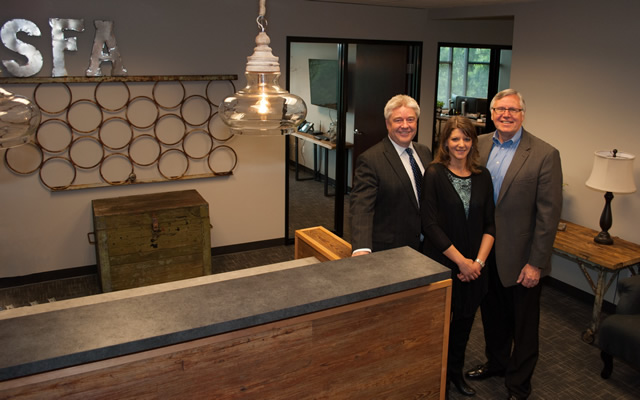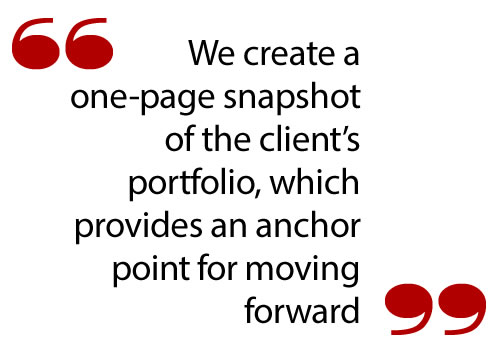Many people look at retirement and financial planning from a fixed point of view. They look forward in time to a specific date when they will stop working and earning income, at which point they will begin their retirement. It’s as if their life consists of several long straight lines, and each new line is a major change in direction.
However, life is not that linear, and it will involve many ups and downs along the way. Some significant changes can be planned, while others can be unexpected, such as job losses or promotions, marriages or divorces, and new grandchildren or unexpected illnesses and deaths. These major life transitions may affect more than your finances – they can also significantly impact your ability to make rational decisions.
Ron Wilkinson, CFP®, CeFT®, founding partner of Security First Advisors Inc., believes that people go through a period of cognitive depletion when they experience major changes that affect their lives and money. In essence, they can lose the ability to reason, and freeze up when required to make decisions. That’s where a Certified Financial Transitionist® (CeFT) becomes most useful, as they walk clients through their most serious transitions, whether it’s an inheritance or the loss of a spouse. “A Certified Financial Transitionist will recognize what stage their client is in and will help them to come through the other side to their new normal,” said Wilkinson. “The goal is not to help them solve that particular problem, but rather to help them step back to look at their options and then move forward in a more manageable way.”
“A Certified Financial Transitionist will recognize what stage their client is in and will help them to come through the other side to their new normal,” said Wilkinson. “The goal is not to help them solve that particular problem, but rather to help them step back to look at their options and then move forward in a more manageable way.”
In 1986, Wilkinson became a Certified Financial Planner® and in 1997 founded Security First Advisors with its president, Evan Russell, CFP, CeFT. Along with Stacy Rerick, CFP, CeFT, CDFA®, the partners of this fee-based Registered Investment Advisory firm provide comprehensive financial planning and money transition services. These include life transitions, investment strategies, estate and retirement planning, family-focused strategies, and risk management planning.
Client education should be central in any financial planning relationship, and it is integral to helping them during the transition process. Many people feel intimidated by the financial planning process, as they don’t understand the jargon and the fluctuations of the financial market adds to their confusion. They tend to get frozen by the potential choices available to them, as well as the advice they receive from friends or hear about on the news. Transitions can compound this indecisiveness as it can seem like there are too many major decisions to make.  Wilkinson understands that clients can be intimidated, so they don’t ask questions? He has dealt with highly educated people who would say that they felt challenged by the financial process. He makes it clear that every question is valid and encourages clients to ask about any topics related to their lives, the economy, investments, what’s happening in the world or whatever else is concerning them. His goal is to make his clients feel comfortable to ask whatever they like, and he lets them know that he is there to support them in every possible way.
Wilkinson understands that clients can be intimidated, so they don’t ask questions? He has dealt with highly educated people who would say that they felt challenged by the financial process. He makes it clear that every question is valid and encourages clients to ask about any topics related to their lives, the economy, investments, what’s happening in the world or whatever else is concerning them. His goal is to make his clients feel comfortable to ask whatever they like, and he lets them know that he is there to support them in every possible way.
“Recently, I was having a discussion with a client, who is a medical professional, and he did not know what to do in the face of what was happening in the economy,” said Wilkinson. “I discussed that financial planning was much like getting a physical, and it would help to identify any serious issues that could affect his portfolio. We might find that your blood pressure and your vitals look great, but we could also find a tumor, and that truly resonated with him.”
Given that every client has a different life situation and financial needs, retirement planning must be customized to fit their particular situation. It also needs to be flexible enough to change directions when transitions occur. Using a risk profile system is one tool for evaluating a client’s appetite for risk, which will help to determine potential investment strategies. It allows the advisor to determine the client’s comfort level with what has occurred in the past, as well as with what is happening in the moment. It also enables the advisor to establish a safe withdrawal rate for the client, which depends on a number of factors, including returns and timing.
“We create a one-page snapshot of the client’s portfolio, which provides an anchor point for moving forward,” said Wilkinson. “It provides a quick summary of assets, income sources, expectations and other key data. In essence, it summarizes what they have, as well as what they want to do.”
Some clients make long-term care planning part of their financial and retirement plan. This is prudent given how much longer people are living these days. According to the experience of the clients of Security First Advisors, those who had preplanned their long-term care had better results, and felt better, than those who relied on Medicaid. Many clients want to stay in their homes as long as possible, which is another reason why the main residence is a critical asset to own.
It’s important to note that financial planning involves people, and not just their finances. While a traditional financial planner will focus on the technical aspects and numerical factors of preparing clients for retirement, Security First Advisors focuses on the personal side, and integrates that element into the technical side. Transitions can be emotionally and mentally trying, so Wilkinson and his partners apply their process to help clients feel better about their choices and avoid being overwhelmed.
“Most widows leave their advisors because they feel that they are not being listened to, which is why we take the time to sit with them and understand their concerns,” said Wilkinson. “We treat the client as an active thinking partner in the process, and don’t dictate what they should do when making decisions about their financial future.”
For more information on Security First Advisors, visit: sfainc.us
Navigate the "new normal" Certified Financial Transitionists




